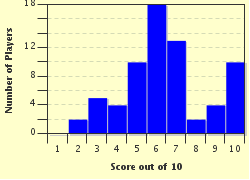Quiz Answer Key and Fun Facts
1. Venice is said to have been founded in 421 at exactly noon when which church was dedicated in the city?
2. Allegedly elected in 697, who is considered to be the first doge (or leader) of Venice?
3. Which son of Charlemagne, who was King of Italy, failed in his attempt to concur Venice in 810 and later died from diseases he caught while fighting?
4. Who is the patron saint of Venice who is represented by the winged lions that can be found all around the city?
5. As the Republic of Venice started dominating the Adriatic Sea beginning in the 12th and 13th centuries, the city of Venice was seen as the top city for which important commodity?
6. Venice had a close relationship with which city from which it gained considerable power and wealth through trade and, eventually, treasures when that city was sacked in 1204 during the Fourth Crusade?
7. Which of the following did NOT contribute to the decline of the once prosperous Republic of Venice and the city during the 15th and 16th centuries?
8. The 1797 Treaty of Campo Formio signed by Napoleon after he invaded the city gave Venice to which European nation?
9. Venice was considered too beautiful to bomb during World War II, so it received no attacks from either Axis or Allied forces.
10. In modern times, Venice has become an increasingly popular locale for destination weddings. Which celebrity married human rights attorney Amal Alamuddin in Venice in 2014?
Source: Author
Joepetz
This quiz was reviewed by FunTrivia editor
bloomsby before going online.
Any errors found in FunTrivia content are routinely corrected through our feedback system.

